When the cold and dreary days of winter end, we are all craving the chance to be outside in the sunshine and balmy breezes. It feels like everything is alive again, from the flowers blooming and the trees leafing out to the buzz of birds, bees and butterflies going about their business. Look around and you’ll see wildlife emerging from their long winter’s naps to start new families. Even the air smells different in spring.
The Health Benefits of Nature Exploration
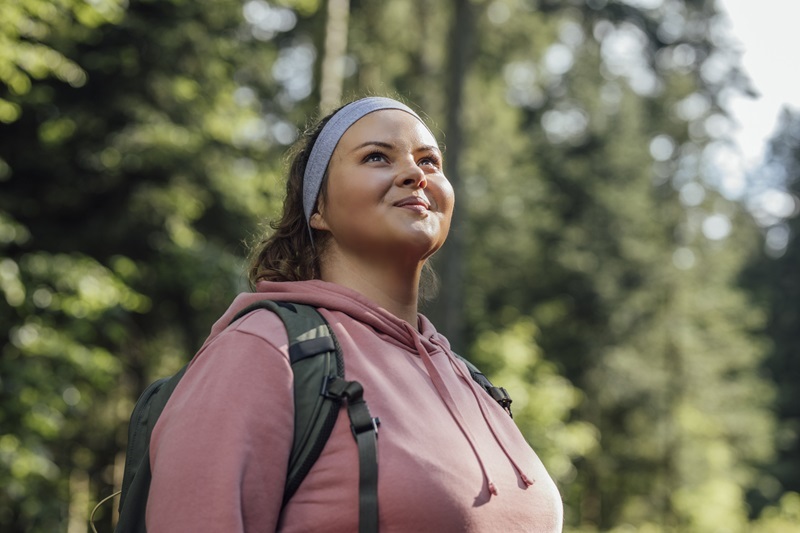
Nature’s Healing Powers
Exploring nature is healthy for our bodies, minds and spirits. Studies have shown that we are more relaxed in natural settings, and this can “help us concentrate and focus more effectively,” according to a report from UC Davis Health.
The report adds that when we spend time in nature, it decreases the stress hormone cortisol. This reduces the risk of heart disease, strokes and hypertension.
Exposure to the sun helps your body produce vitamin D, an essential nutrient for managing your metabolism. Research has also found that people who regularly spend time outdoors daily tend to sleep more soundly than people who don’t.
A Guide to Springtime Nature Adventures
Just going outside anywhere provides many of these benefits, but outdoor adventures can help you build an even stronger connection to nature, while toning your muscles and helping you to shed extra pounds. You can choose from many different outdoor spring activities, ranging from easy trail walking to scaling cliffs.
Explore our comprehensive spring outdoor activities guide below, packed with valuable insights to help you discover and partake in activities you’ll love throughout the season.
Hiking and Trail Walking: Enhancing Fitness with Nature
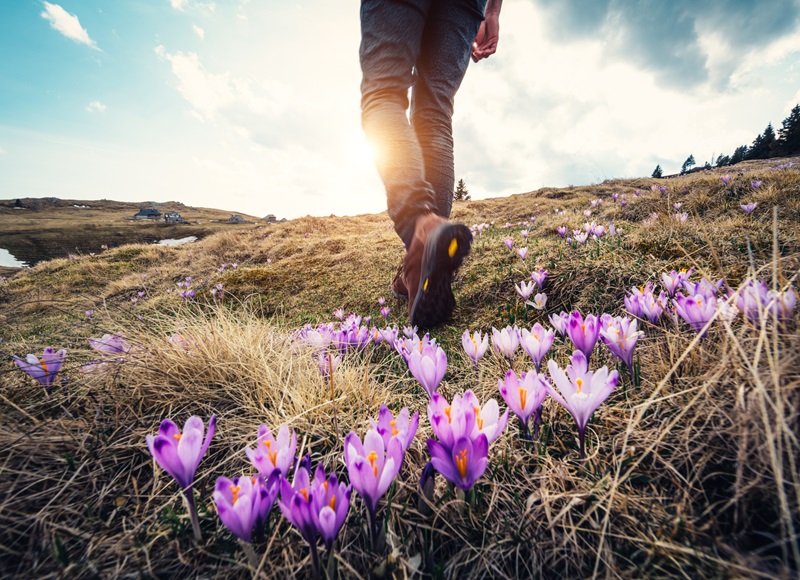
Embracing the Challenge: The Benefits of Hiking and Trail Walking
If you love walking for exercise, hiking makes it even better by adding challenges to the path and bringing you closer to the wonders of nature. Hiking and trail walking are more strenuous than strolling around the block, so you burn more calories, but you hardly notice because you’re too busy admiring the scenery.
Finding Your Path: Utilizing National Parks and Online Resources
National parks and wilderness areas and most large state parks offer you trail maps that tell you how far, steep and challenging each route is, and approximately how long the average person takes to complete it. For other options, visit Alltrails.com, where you can find nearby routes and comments from other people about their experiences with each trail. After you’ve hiked one, join the community and post your review to help others who are looking for trails.
The Sensory Experience of Hiking: Engaging with Nature
Hiking along a natural path is a treat for all your senses. Take the time to notice the play of light and shadows as you walk among the trees. Listen for the birds singing and the trickling of water, and inhale rich fragrances like pine and cedar.
As you walk, be alert to little things such as a clump of brightly colored wildflowers or the sudden leap of a toad that’s the same hue as the ground. Remember, hiking is as much about the journey as the destination. Slow down to soak up all that’s around you.
The Beauty of Spring Hiking: Wildflowers and Wildlife
In spring, a succession of captivating wildflowers appears in woodlands throughout the U.S. These native plants, called “ephemerals” by botanists, include delicate beauties such as Dutchman’s breeches and bloodroot. Each of them blooms for just a couple weeks and then they fade into the background. It can be exciting to spot them.
Enhancing the Hike: Tools and Apps for Nature Lovers
The iNaturalist app is a handy way to identify plants, animals, insects and more just by taking pictures of them. When you post your photos and where they were taken, you also contribute to the work of scientists who are tracking the movement of species in the wild.
Gear Up: Choosing the Right Equipment for Hiking
Sneakers work fine for light trail walking. For more aggressive hikes, you want to wear shoes with sturdier soles and a tread that grips. Hiking shoes and boots provide support and traction in a wide range of terrain.
Many hikers use trekking poles to help with balance and stability on uneven paths or steep hills. The poles also take stress off your knees as you walk. REI is a national retailer of gear for hiking and other outdoor adventures. It has frequent sales and even offers lightly used gear like trekking poles at discounted prices.
Discover the Joy of Bird Watching
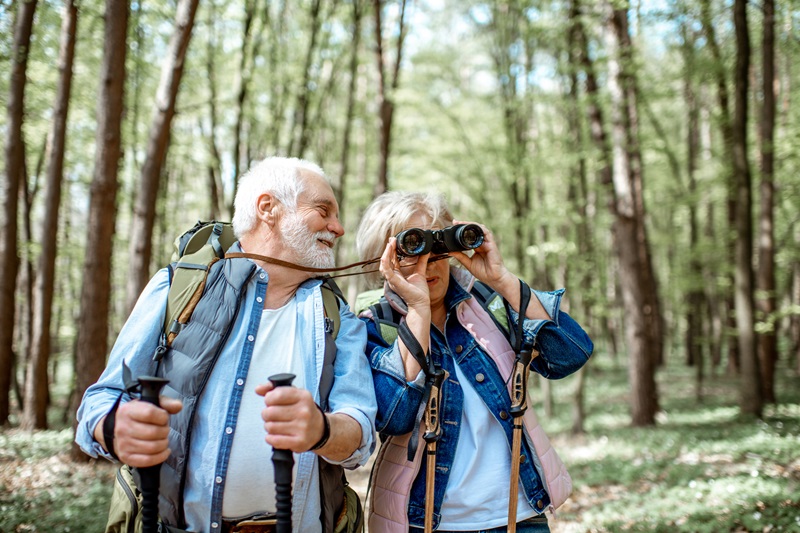
The Best Season for Bird Watching: Spring’s Natural Symphony
Wherever you live in the U.S., you can see a fascinating variety of birds outside your door. The types of birds you’ll see depend on where you live, but you can look for songbirds such as robins, ducks and other waterfowl, and awe-inspiring raptors like hawks.
Bird watching offers you a glimpse into their world and can give you hours of enjoyment in the outdoors. Spring is just about the best time to get into bird watching as many species are mating, nesting and raising their chicks.
You can go outside and start watching birds on your own. If you live near a pond, stream or any body of fresh water, you’re almost certain to see many different types of birds there.
Join the Community: Benefits of Local Bird-Watching Groups
Joining a local bird-watching group can help you find the places where you will see the most extraordinary birds. The U.S. Fish and Wildlife Service offers links to bird-watching organizations and you can check on Facebook for a group near you.
Identifying Birds: Tools and Resources for Birders
The National Audubon Society is a bird conservation nonprofit and its app makes it easy to identify birds by their appearance or song. You can also choose from many handy printed field guides that help with bird identification. One of the most useful is The Sibley Guide to Birds. It has detailed illustrations, maps and tips on distinguishing similar-looking birds.
Essential Gear for Bird Watching: Choosing the Right Binoculars
You also will want a pair of good binoculars for bird watching. As you’re shopping, keep their weight in mind as you will spend long periods of time holding them up to your eyes.
Tracking Your Discoveries: The Bird Watcher’s Life List
Serious birders keep a “life list” of the species they’ve seen. This is typically in a journal, but some post them on apps such as eBird, which is linked to the Cornell University Ornithology Lab. The app also launches challenges that can turn bird watching into a competition.
Camping and Backpacking Adventures
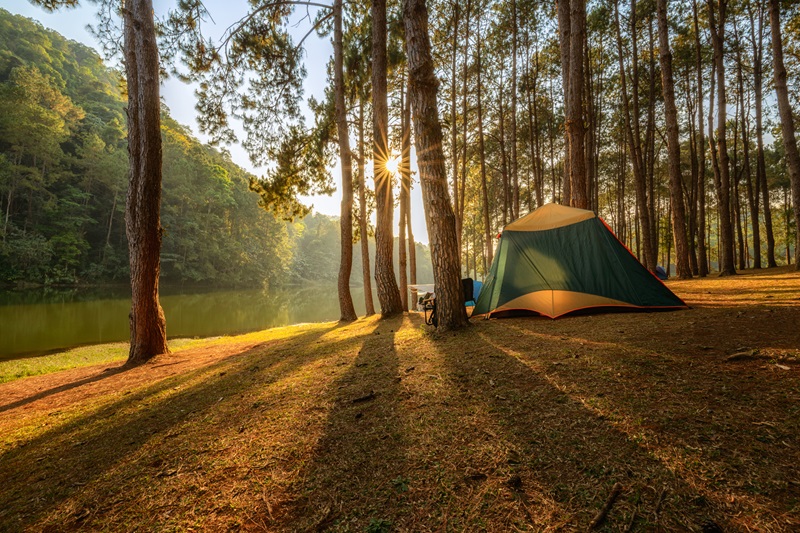
Tailoring Your Outdoor Experience: Camping Comforts and Challenges
For a full-immersion outdoor adventure, plan a camping or backpacking excursion. Spending a night or several outside puts you in direct contact with the natural world and can give you a break from the concerns of your everyday life. The cool nights of spring are ideal for hanging out by the campfire and sleeping outdoors.
The experience can be as comfortable as you choose. For instance, you can choose a spot where you pull up with your car and set up your tent and other necessities close by. On a backpacking trip, you carry everything you need as you travel into the wilderness. That compels you to think hard about what you really need to survive for a few days and how to live efficiently.
Discovering the Perfect Campsite: Where to Camp in the USA
Campgrounds are available at national parks, and many state parks also offer camping spots to the public. Private property owners near wilderness areas often operate campgrounds, too. Check out Camping USA for state-by-state listings.
Preparing for the Wilderness: Backpacking Permits and Planning
If you’re planning a backpacking trip on public lands, you may need a backcountry permit. Visit the National Park Service website for details on how to get one.
Essential Gear for Camping and Backpacking
The basic gear you need for a camping trip includes a tent, sleeping bag and sleeping pad for insulation and comfort, a liquid gas stove or a grate for cooking over an open flame, a lantern or flashlight, and a cooler that can be closed and locked to protect your food from raccoons, bears and other hungry wildlife.
Packing Smart: Backpacking Essentials and Tips
Backpackers need a sturdy framed pack big enough to hold enough supplies for the number of days you are planning to be out. Freeze-dried meals help keep your load light. Experienced backpackers often carry a hammock instead of a tent and they simply hang it up and sleep under the stars. If you want to try out these activities before purchasing all the gear, REI stores and many other outdoor outfitters offer equipment for rental.
Tips for First-Time Campers and Backpackers
For your first camping or backpacking trip, plan for no more than two nights outside. That will give you enough of the experience to determine if you enjoy it without committing you to a lengthy excursion.
Most important, check the weather where you will be camping right up to the day you leave. Trying to sleep in a tent in the rain or heavy winds is not much fun. Also, be prepared for the temperatures to drop overnight, even in late spring. Bring extra clothing to keep you warm as you sleep.
Paddle Sports: Kayaking, Canoeing and Stand-Up Paddleboarding
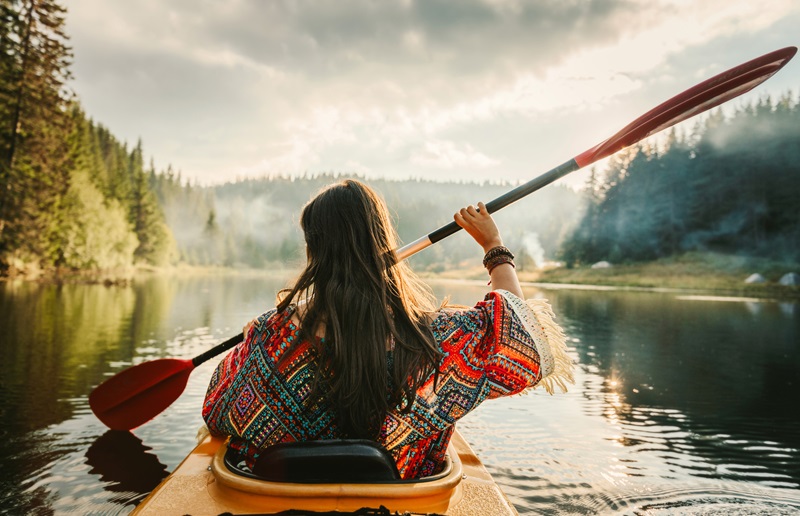
Choosing Your Paddle Craft: Canoes, Kayaks and SUPs
On warm days, paddling on a river, creek or lake is a fun way to stay cool, be active, and enjoy the outdoors. All are fairly easy to do once you learn how.
Canoes work best for two or more people, but they require coordinated paddling to keep you moving straight in the water. Kayaks are the simplest to paddle and turn, and they are the most stable of the three. On flat water, a kayak almost never flips over unless the paddler leans way too far in one direction.
A stand-up paddleboard (or SUP) looks like a wide, thick surfboard and you stand on it as you move through the water. It may appear to be too difficult to balance, but if you can ride a bicycle then you can use an SUP.
Learning the Ropes: Paddle Sports Classes and Rentals
The easiest way to start is by taking a class. During the summer, the outdoor gear brand L.L. Bean brings its watercraft to parks for the public to try paddling and learn the basics at no charge as part of its Discovery Programs. If you just want to try it on your own, look around at your local recreational areas with a lake or creek. You can often find rentals there.
Investing in Your Own Equipment: Costs and Considerations
Buying your own canoe, kayak or SUP will cost you from $200 for budget models to more than $2,000 for high-end options. Storage may also be a consideration. That’s one reason many people choose inflatable versions. They are made with thick material, you fill them with an air pump, and they become more than rigid enough for you to sit in or stand on. When you’re done, you simply deflate it and put it in a bag you can keep in a closet.
Paddling doesn’t require special gear, but bear in mind that you will be on the water, where the sun’s rays are especially bright. Be sure to use sunscreen and wear a hat.
The Thrill of Road Cycling and Mountain Biking
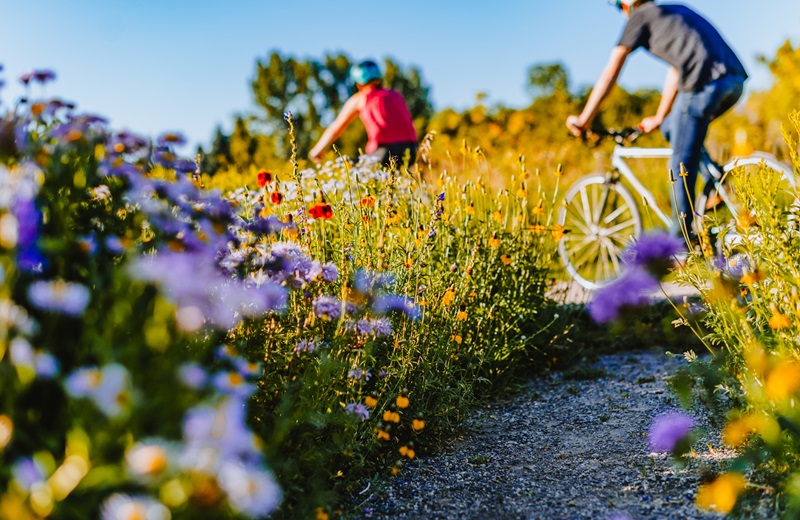
Rediscovering Joy and Freedom: The Essence of Cycling
No matter how old you are, when you ride a bike you get a little bit of the joy and freedom that you felt when you first learned how. Pedaling around the neighborhood with your family is fun exercise, but when you want a more exciting challenge you can try road cycling or mountain biking.
Road Cycling: Embracing Speed and Scenery
For road cycling, you use a lightweight bike with skinny tires. The best rides are on roads with attractive scenery, smooth paving and little traffic. Many independent bike shops organize group rides for people of different skill and fitness levels, and joining one can be a quick way to learn some of your local routes. Experienced cyclists often use the Strava app to track their bike rides and their routes may be visible to other users of the app.
Mountain Biking: Conquering Trails and Terrain
Mountain bikes are heavier than road bikes and they have thick, knobby tires for traction on dirt paths. The ideal trails are known as “single-track,” meaning that they’re only wide enough for one bike. You can find trails that are mostly flat and smooth or try more rugged areas with roots, rocks, and steep ups and downs. Singletracks.com has state-by-state listings of mountain bike trails. The staff at local bike shops are usually happy to share their knowledge about appropriate rides where you live, too.
Bike Maintenance: Ensuring a Smooth Ride
While you’re at the shop, get your bike tuned up. This includes ensuring all the cables to your brakes and gears are secure and working properly, your chain is oiled and the tires are checked for wear. Whichever type of riding you do, you’ll enjoy it more if your bike is running smoothly.
Starting Your Cycling Journey: Gear and Tips for Beginners
Padded shorts also make a big difference in how much you like being on your bike. They provide extra cushioning and prevent saddle sores.
When you’re ready to ride, start slowly and limit yourself to no more than a half hour for the first few sessions to give your muscles and your backside a chance to adapt.
The Serene Art of Fishing and Fly Fishing
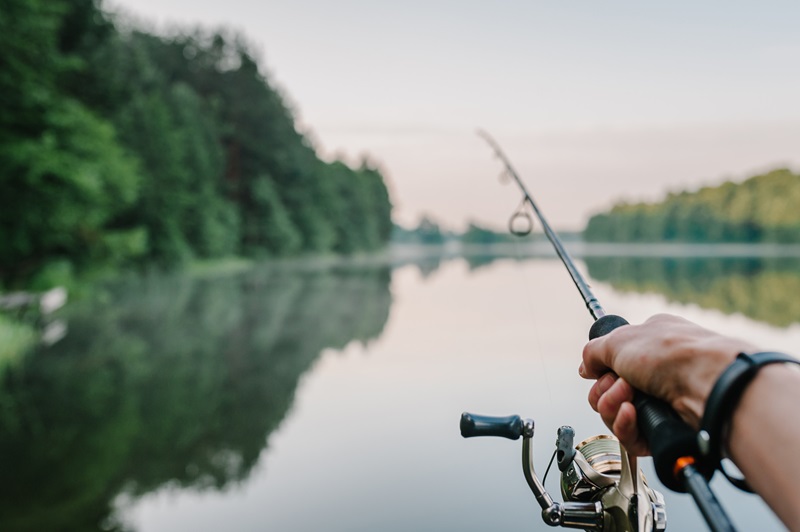
Seasonal Fishing Opportunities: Spring’s Bounty
There is no more relaxing way to spend a warm day than with a fishing pole in your hands and the fishing line in the water. Fishing may appear passive, but it takes attention to the habits of the different types of fish and thoughtful strategies about where to find them. At its best, fishing opens a connection between you and nature that focuses your awareness on the water, light and temperature, marine plants, insects and the fish.
Spring is prime time for fishing because so many species are active after the long, cold winter. Large-mouth and small-mouth bass, which are native to freshwater lakes and streams all over the U.S., are a popular game fish. In the Northwest, salmon travel up rivers and creeks to spawn in spring. Shad run in the rivers of the Northeast. Trout are a prize for people who love fly fishing. These days, many local conservation groups stock streams with trout in the spring.
Finding the Perfect Spot: Local Fishing Opportunities
You can enjoy the pleasures of fishing just about anywhere there’s water, from the ocean to a little babbling brook. Local bait shops and friendly fishermen (and fisherwomen) can be the best source for suggestions on where to drop your line.
Licensing and Regulations: Preparing for Your Fishing Adventure
In most U.S. states, you need to purchase a fishing license. That’s typically through the wildlife and game department. The only other equipment you need to fish are a pole and a reel of monofilament line, a hook, and bait or a lure. Fishing poles can range from basic bamboo types for less than $30 to high-end carbon models for more than $300. Cabela’s is an affordable source for all kinds of fishing gear.
The Unique Challenge of Fly Fishing
Many people who fish for trout and salmon prefer fly fishing. They use hand-crafted “flies” that resemble specific insects that the fish feed on. Fly fishing takes almost constant motion to keep the lure looking like a real insect and the poles and reels are designed for this. The best place to be when you want to catch fish with a fly is in the water, so you need wading boots to keep you dry while you do it.
Rock Climbing and Bouldering: Ultimate Adventure Sports
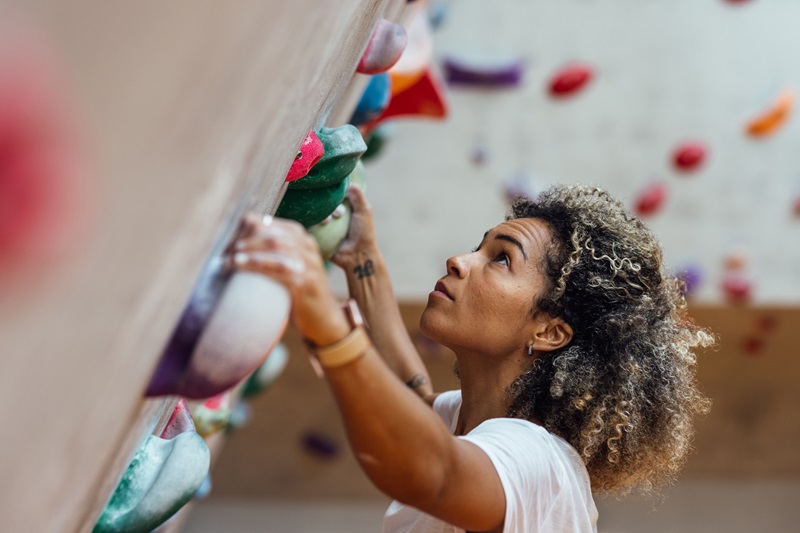
Embrace the Challenge: Introduction to Rock Climbing and Bouldering
For an adventure that tests your strength, stamina and agility, plus gives you access to exceptional views, try rock climbing or bouldering, its more approachable sibling. Scaling stone walls or massive rocks puts your whole body to work and requires your full concentration. When you reach the top, you get a powerful feeling of accomplishment and, perhaps, the chance to stand at an overlook that few people reach.
The long days and sunny, dry weather of spring create perfect conditions for rock climbing and bouldering. Climbing safely requires time for setting up the ropes and harnesses that protect you from injury. You want to work methodically as you ascend, rather than rushing and taking unnecessary risks.
Learn and Grow: The Role of Rock Climbing Gyms
Rock climbing gyms have sprung up in many places across the country. These facilities are the best place to learn the skills and to build up the strength you need, especially in your hands and fingers. At rock-climbing gyms, you will meet more experienced climbers, who can tell you about nearby spots that are suited to your ability and interests.
Essential Gear: Climbing Shoes, Chalk and More
The primary item of gear that you’ll need are climbing shoes. They have soles that allow you to use your feet to grip thin ledges in the rock. Most climbers use chalk to keep their hands dry and keep a chalk bag strapped around their waist, so they have it when needed. If you decide to climb regularly, you’ll want to invest in a harness, ropes, and carabiners or clips, so you’re not always borrowing them from other people.
Climbing Safely: Importance of Preparation and Caution
Safety is, by far, the most important concern when rock climbing. Go with an experienced climber as you’re learning and never climb alone. Check the weather right up until the time you begin ascending to be sure you don’t get caught in a storm. Spring is a glorious time to be outdoors, but the weather can change dramatically from one hour to the next. Watch for one of the many warm, sunny days to try any outdoor adventure.

